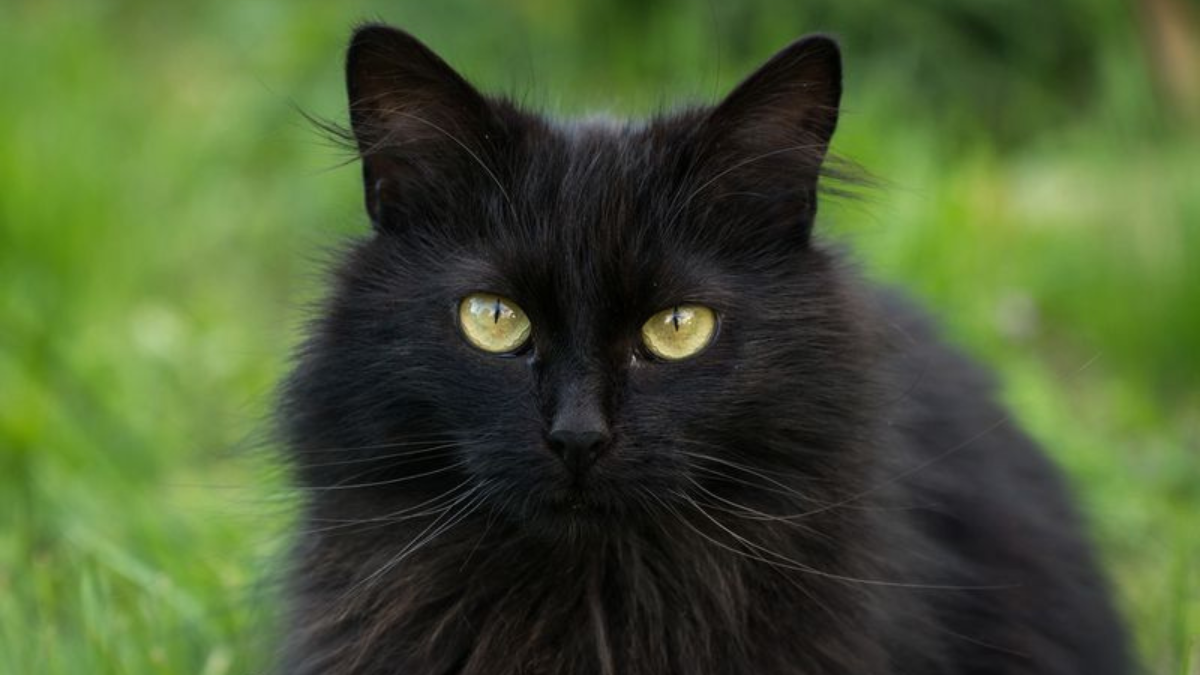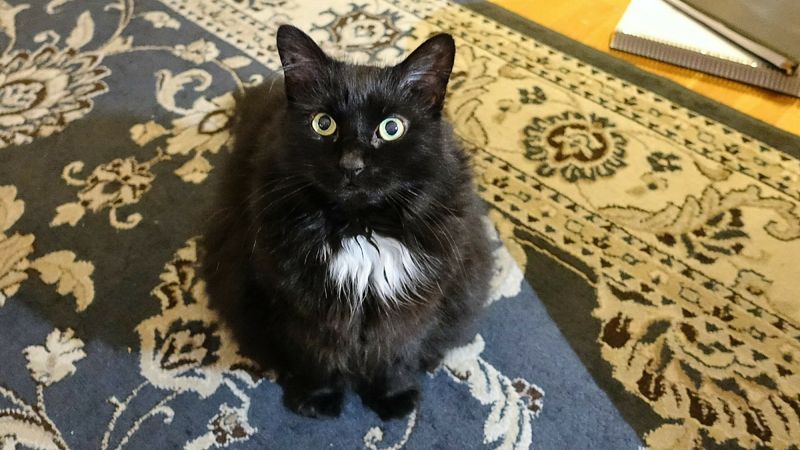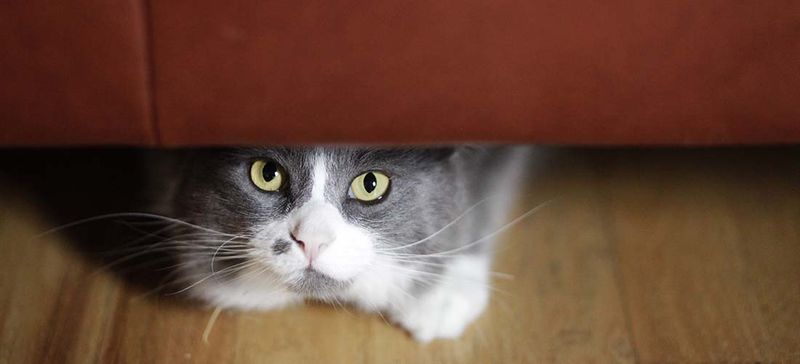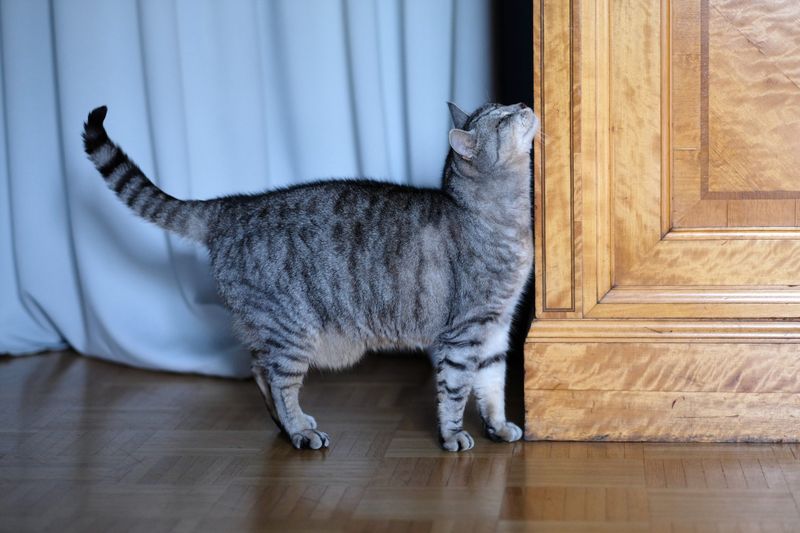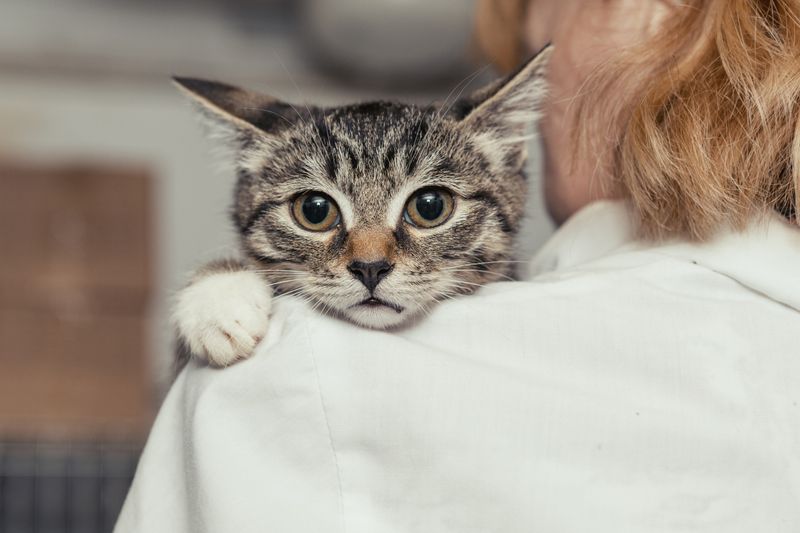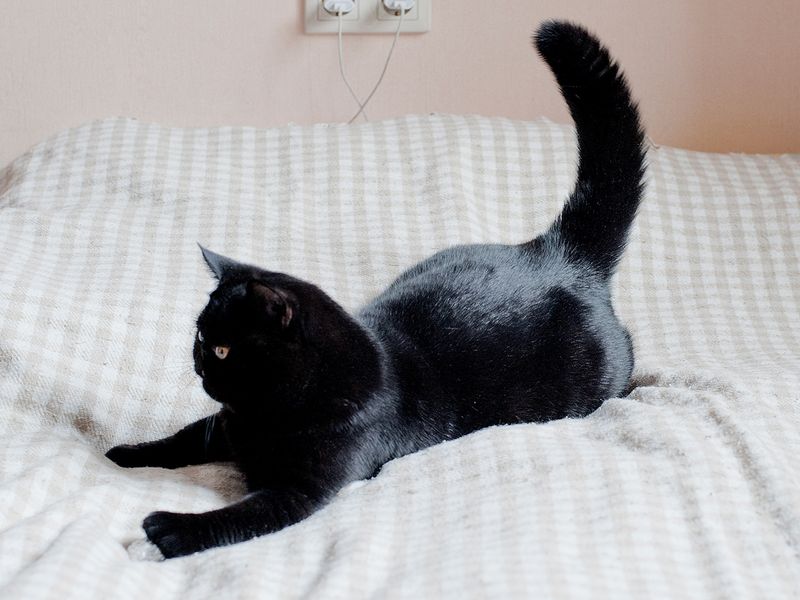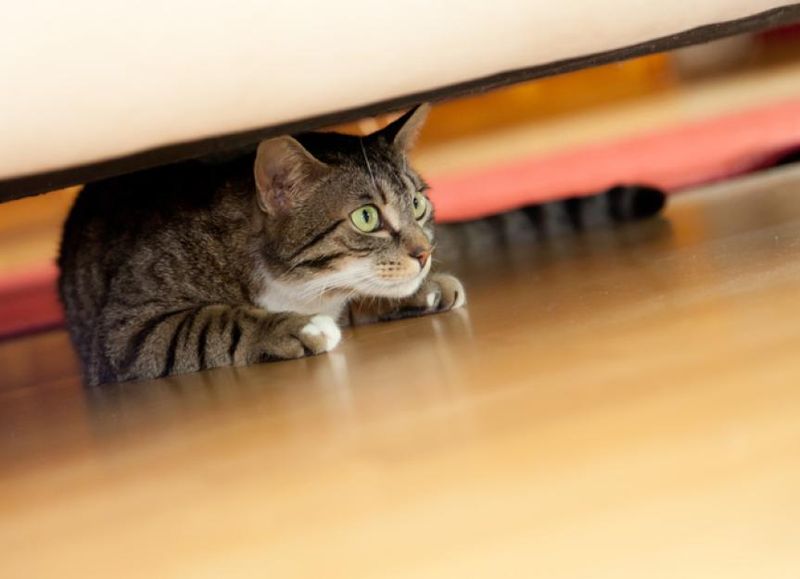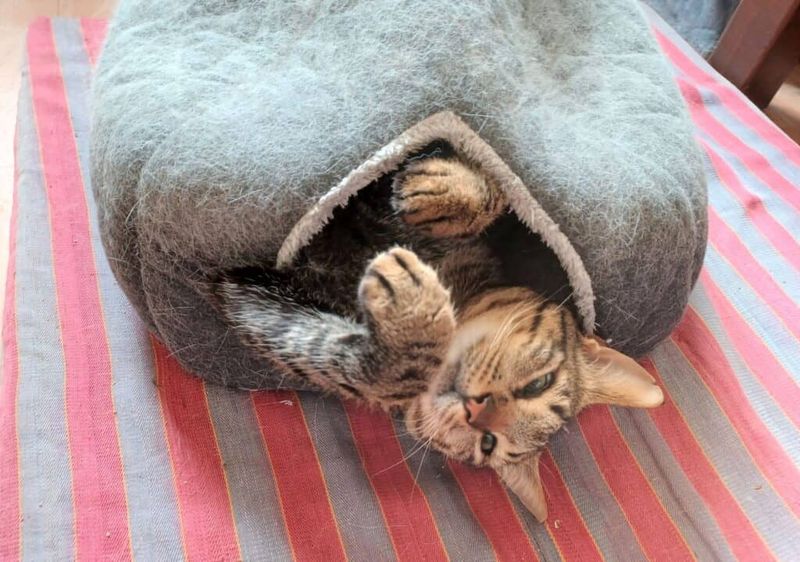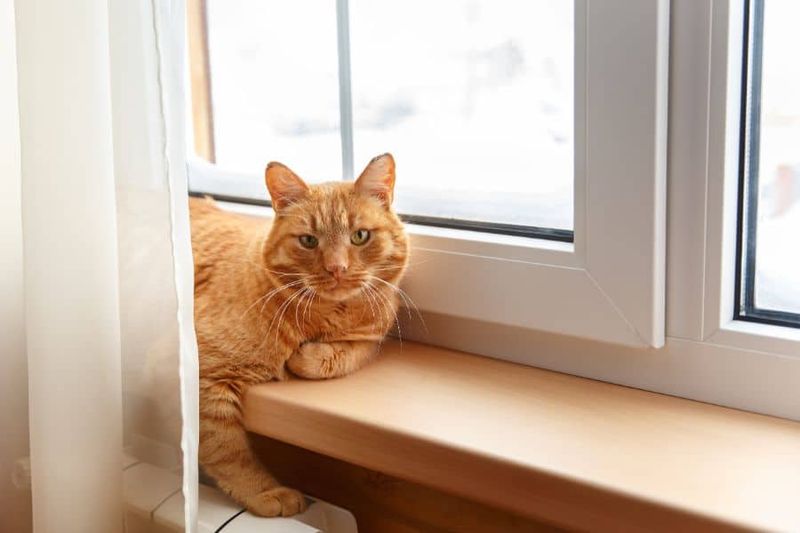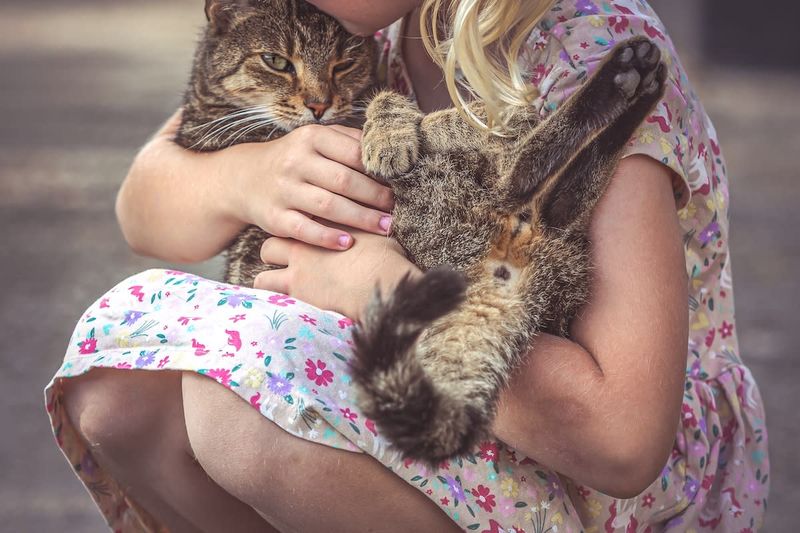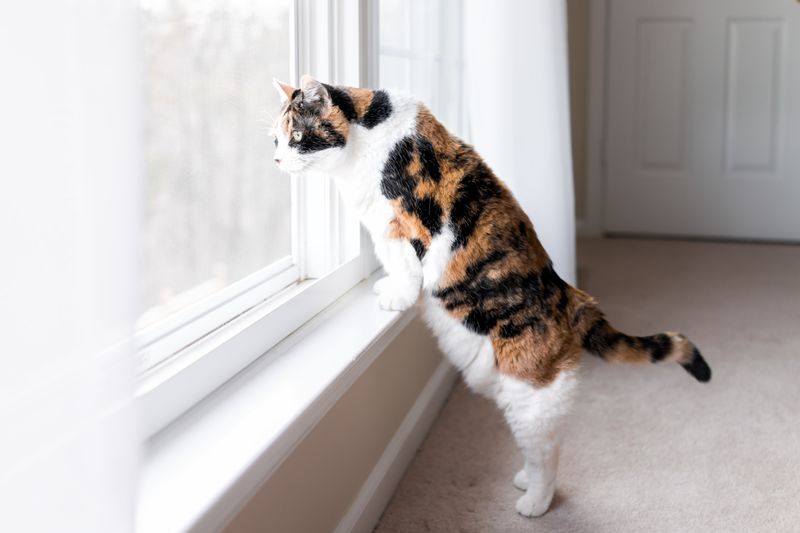📖 Table of Content:
- 1. Cautious Curiosity
- 2. Fear-Induced Hiding
- 3. Territorial Marking
- 4. Surprising Affection Bursts
- 5. Nighttime Activation
- 6. Food Anxiety
- 7. Startled Overreactions
- 8. Trust Testing
- 9. Attachment Anxiety
- 10. Playfulness Emergence
- 11. Selective Sociability
- 12. Breakthrough Vulnerability
- 13. Territorial Defense
- 14. Emotional Healing Signals
Welcoming a rescued cat into a home marks the beginning of a special emotional journey. These cats often carry the weight of past hardships, which influence how they adapt to their new surroundings. Recognizing their emotional needs is key to fostering trust and connection.
Rescued cats may exhibit a wide variety of feelings, from fear and anxiety to curiosity and affection. Their past experiences shape their behavior and reactions in unique ways. Patience and understanding are essential in helping them feel safe and loved.
Adjusting to a new home can be overwhelming for a cat coming from uncertain circumstances. Each step forward is a sign of healing and growing comfort. Observing and responding to their emotional cues helps create a lasting and rewarding relationship.
1. Cautious Curiosity
Rescued cats often approach new surroundings with watchful hesitation. Eyes wide, whiskers forward, they’ll investigate their territory inch by inch, mapping escape routes and potential hiding spots.
Their bodies remain low to the ground as they sniff furniture corners and peer around doorways. This careful exploration is their way of ensuring safety in unfamiliar territory.
Don’t rush this process! Allow your new companion to discover your home at their own pace, which builds confidence. Some cats complete their inspection in hours, while others might take days before feeling secure enough to relax.
2. Fear-Induced Hiding
Upon entering a new home, rescue cats often retreat under beds or furniture. This hiding is a self-defense mechanism shaped by their past. It helps them cope with the overwhelming shift in their environment.
During this phase, provide accessible hiding spots with food, water, and a litter box nearby. Speaking softly while sitting nearby helps them associate your voice with safety.
Patience wins this waiting game. Forcing interaction only reinforces fear. Some cats emerge within hours, while others need weeks before feeling secure enough to venture out regularly.
3. Territorial Marking
Face-rubbing against furniture isn’t just affection – it’s your cat claiming territory! Scent glands on their cheeks deposit familiar pheromones, transforming your strange home into their personal domain.
This behavior signals growing comfort as they establish ownership. You might notice increased rubbing on items carrying your scent, like shoes or the couch where you sit. They’re creating a blended family scent map.
Encourage this natural behavior by allowing full access to communal spaces when they’re ready. This marking reduces anxiety and builds confidence. Some rescued cats mark extensively during their first weeks before settling into a maintenance routine.
4. Surprising Affection Bursts
After days or weeks of distance, your rescue cat might suddenly jump into your lap or nuzzle your hand. These unexpected affection moments often catch new owners off guard, especially after previous standoffish behavior.
These breakthroughs happen when your cat crosses an invisible trust threshold. Their body language transforms – tail up, relaxed whiskers, and half-closed eyes signal they’ve decided you’re trustworthy.
Respond with gentle appreciation rather than overwhelming excitement. Calm pets and soft words reinforce that vulnerability brings rewards. Many rescues alternate between affection and independence as they adjust to expressing needs safely.
5. Nighttime Activation
Sunset triggers an energetic transformation in many rescued cats. Their ancestral hunting instincts kick in, leading to zooming across rooms, pouncing on invisible prey, or batting at dangling objects with renewed intensity.
This behavior, called ‘nighttime activation,’ often startles new owners who assumed their quiet daytime cat would remain calm through the night. Street cats particularly develop strong nocturnal patterns from hunting during quiet hours.
Channel this energy through evening play sessions with wand toys. Interactive play satisfies hunting drives and helps establish healthier sleep patterns. Most rescued cats adjust their activity cycles to match household routines within a few months.
6. Food Anxiety
Rescued cats often show intense food-related behaviors stemming from past hunger experiences. Gobbling meals in seconds, guarding bowls aggressively, or hoarding kibble under furniture reflects survival instincts from times of scarcity.
Food anxiety manifests differently across cats. Some become vocal and demanding before mealtimes, while others silently shadow your movements toward the kitchen. These behaviors connect directly to their previous living conditions.
Regular feeding schedules help establish security. Consider puzzle feeders to slow consumption and provide mental stimulation. Most food-anxious cats gradually relax their behaviors over months as they learn resources remain consistently available.
7. Startled Overreactions
Dropped spoons, sudden movements, or unexpected noises might send your rescue cat bolting for cover. Their heightened startle response stems from survival mechanisms developed during uncertain times before rescue.
Watch for their trigger patterns – specific sounds, movements, or even smells that spark fear responses. Their body language provides clues: dilated pupils, flattened ears, and puffed tails indicate genuine distress rather than dramatic overreaction.
Create predictable household routines to reduce surprises. Speak before entering rooms and move deliberately around nervous cats. Most rescued felines gradually calibrate their threat detection systems as they learn which household stimuli are genuinely harmless.
8. Trust Testing
Your rescue cat might repeatedly approach and then retreat, watching your reaction each time. This isn’t indecision – it’s deliberate trust testing to evaluate your predictability and safety.
They’re gathering data about your behavior patterns. Will you grab them? Chase them? Or respect their boundaries? Each interaction builds their internal trust calculator.
Consistency becomes your greatest tool during this phase. Respond predictably with gentle voices and slow movements. Avoid forcing interactions when they retreat. Many cats conduct these tests for months before fully relaxing their guard, especially those with histories of mistreatment.
9. Attachment Anxiety
After bonding, some rescued cats develop intense attachment, following you room-to-room and vocalizing when separated. This shadow behavior stems from abandonment fears and uncertainty about your permanent presence.
Their meows might intensify when you prepare to leave, or they might attempt to block doorways. These behaviors signal genuine distress rather than manipulation – they’re expressing real concern about losing their newfound security.
Establish predictable departure and return routines. Leaving radio sounds playing and providing engaging toys helps during absences. Most attachment-anxious cats gradually develop confidence over months as they internalize that you consistently return.
10. Playfulness Emergence
The first time your serious rescue cat bats at a toy or pounces playfully marks a significant emotional milestone. Play requires vulnerability and indicates they feel secure enough to lower their defenses.
Adult rescues sometimes need to rediscover play, having suppressed this behavior during survival-focused periods. Their initial attempts might seem awkward or hesitant as they reconnect with their playful instincts.
Experiment with different toys to discover their preferences. Wand toys allow interaction while maintaining a comfortable distance. Each play session strengthens your bond while helping them express natural behaviors. Many formerly stoic cats transform into playful companions once they feel consistently safe.
11. Selective Sociability
Rescued cats often develop strong preferences about who they trust. Your cat might bond deeply with you while hiding from other household members or visitors. This selective sociability reflects their cautious approach to expanding their circle of safety.
They carefully evaluate each person’s body language, voice, and movement patterns. Quick movements or loud voices from certain individuals might trigger avoidance behaviors based on past negative associations.
Respect these preferences without forcing unwanted interactions. Allow trusted people to participate in feeding and play to gradually expand their comfort zone. Many rescued cats eventually warm up to additional people, but some maintain selective relationships throughout their lives.
12. Breakthrough Vulnerability
The first belly exposure marks a profound trust milestone from your rescue cat. Showing their most vulnerable body area indicates they’ve moved beyond basic tolerance into genuine trust of your intentions.
This breakthrough often happens unexpectedly – perhaps during a quiet evening together or morning stretches. Their relaxed posture, exposed belly, and slow-blinking eyes communicate complete comfort in your presence.
Respect this gift appropriately. Many cats prefer admiration over belly rubs, which can trigger defensive reflexes. Gentle acknowledgment through soft words maintains the trust they’ve shown. This vulnerability typically emerges months into your relationship, making it especially meaningful.
13. Territorial Defense
After establishing your home as their territory, many rescued cats transform into property guardians. Window-watching becomes serious business as they vocalize at outdoor cats or unfamiliar visitors approaching their newly claimed domain.
This protective behavior signals they’ve claimed ownership of the space and feel responsible for monitoring potential threats. Their posture changes during these moments – tail twitching, ears forward, and focused attention.
Provide window perches for safe observation points. This territorial behavior actually indicates positive adjustment – they’re invested in protecting their new home rather than feeling like temporary visitors. Their vigilance typically balances with relaxation as they become secure in their position.
14. Emotional Healing Signals
Subtle changes mark your rescued cat’s emotional healing journey. Deeper sleep positions, voluntary grooming, and decreased startle responses indicate growing security. These quiet transformations often go unnoticed without deliberate observation.
Track their progression through sleep positions – from alert upright napping to fully relaxed stretching. Consistent self-grooming signals they’ve moved beyond survival mode into self-care. Their movements become more fluid and less hypervigilant.
Document these changes through occasional photos or notes. Healing isn’t linear – stress or changes might temporarily reverse progress. However, the overall trajectory shows their remarkable resilience. Many rescued cats continue showing healing signals for years as they distance themselves from past trauma.
